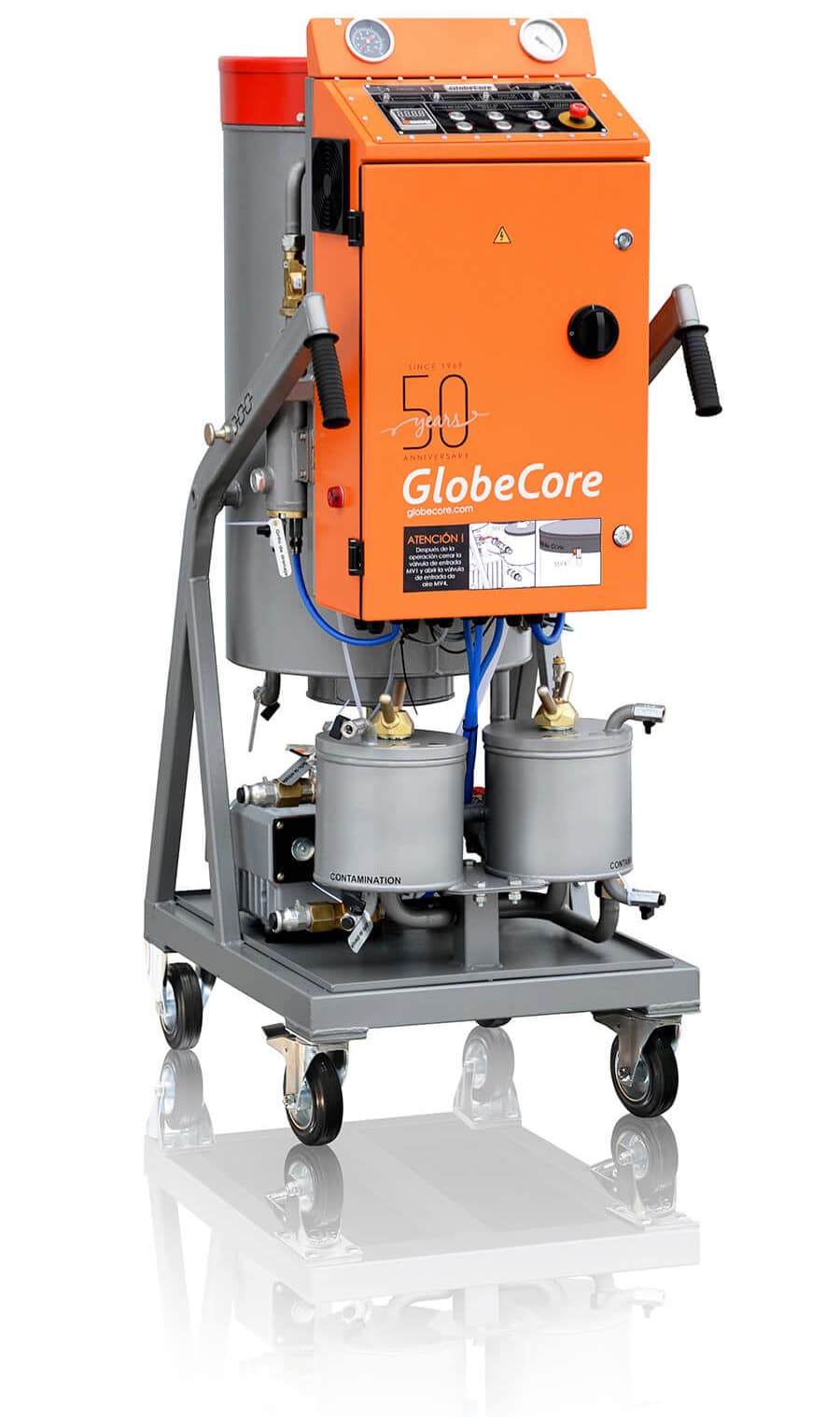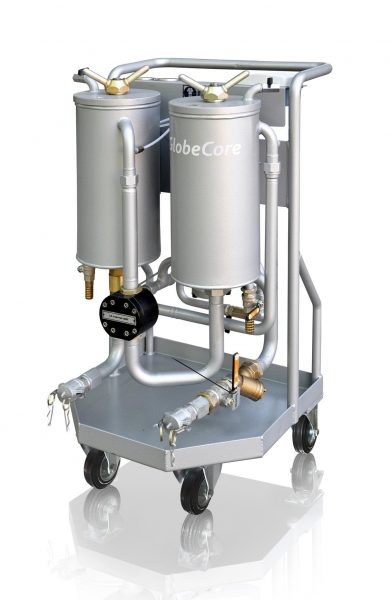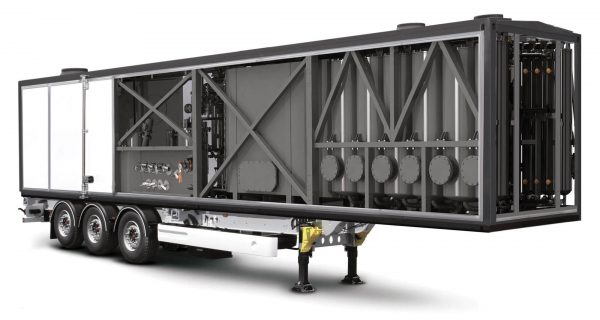An oil purifier is a device designed to remove harmful impurities (solid particles, water and gases) from oil.
Oil purifier: what was it like before?
At first, large sedimentation tanks were used as oil purifiers. Contaminated oil was kept in the tanks for a period of time. Large impurities in the oil gradually settled on the bottom of sedimentation tank under the influence of gravity. The top layer of the oil was collected into another container. Application of this method is limited by its duration and the ability to separate only large particles.
Another oil purification device is the centrifuge. The principle of its operation is based on the effect of centrifugal forces. They remove only those particles whose specific gravity exceeds the specific gravity of oil; they also remove emulsified water. Centrifuging is useless against dissolved gases and moisture and so must be followed by other, more advanced methods of purification.
Filtration is another well-known method for removing mechanical impurities and some water from oil. Large volumes of contaminants are removed by the so-called filter presses. They create pressure with plates that push the oil through filter media, fabric or paper. There are also small stationary filters which are installed in different points of the oil system. The necessary oil flow in this case is created by oil pumps.
It is clear that it is practically impossible to achieve complete oil purification by only one method. Therefore, in practice, a combination of different approaches to oil purification is used in one piece of equipment.
Oil adsorption purification system
Practice shows that purifying oil with adsorption removes products of aging and acid components. Adsorption purification is the process of making the oil flow through a special adsorbent, usually located in a cartridge of a column.
There are continuous and batch adsorption purification systems. In the former case, an adsorption purifier is installed next to a transformer, forcing the circulation of the insulating liquid. The oil flow is constant all the time. Continuous purification of oil in a loaded transformer allows to remove most of the oxidation products and slow down the aging process.
But in some situations continuous purification does not guarantee the necessary oil parameters, and the oil must be changed or processed with the help of special equipment. Batch purification is done in mobile and stationary plants, which use percolation treatment and pump a batch of transformer oil through a layer of fixed adsorbent.
Types of adsorbents used in oil purification
One of the adsorbents used for oil purification is silica gel, a granular substance that is a form of silicon dioxide. Its practical application in oil purification is based on its porous structure and pore size (can vary from 0.1 to 1 nm).
Zeolite is another adsorbent which has found use in the power industry. It has crystalline structure and uniform pore size, which makes it a stronger adsorbent than silica gel. But zeolite can adsorb only strictly defined molecules. Zeolite is much more effective in drying transformer oil than silica gel because of its high adsorption capacity: the channels and cavities occupy almost half of the total volume of zeolite crystals.
A special place in oil purification is occupied by natural adsorbents, which are mined as minerals, such as, bauxites, opoka-clays, diatomites and bleaching clays.
To achieve the maximum adsorption capacity of an adsorbent, it is dried to partially remove water. Complete dehydration is not recommended, since it significantly decreases the adsorption capacity and even destroys the media. The optimum moisture content for a specific adsorbent medium is determined only through trial and error.
Absorption capacity of natural adsorbents can be increased by chemical activation, such as treatment with gaseous ammonia for 10-15 minutes. Another way is acid activation. The sorbent is heated for a long time and mixed with 20% sulfuric acid. This increases pore size and a partially converts silicon dioxide from one form (crystalline) to another (colloidal).
Modern oil purifiers from GlobeCore
Oil purifiers produced by GlobeCore are an excellent example of modern equipment for cleaning contaminated oil. They combine the most effective methods to achieve the best results: oil treatment with high temperature under vacuum, multistage filtration and adsorption purification. GlobeCore uses Fuller’s earth adsorbent for cleaning transformer oil that is reactivated after saturation directly in the plant, and the process of oil treatment is not interrupted.
Oil purifiers are available in various stationary and mobile designs, and are equipped with all sensors necessary for monitoring and controlling the process. The oil can be processed automatically by simply pressing the “Start” button. Unit design is adapted for transportation by land, sea and air.
Other advantages of GlobeCore equipment are:
- safe, easily adjustable and serviced heating element tapes;
- easy filter cartridge replacement (filtration fineness 25, 5 and 1 μm);
- efficient coagulator-evaporator in the vacuum chamber;
- prevention of oil foaming;
- protection from oil leaks;
- remote control of equipment with mobile phones.


 CMM-0.6L Oil Degassing ...
CMM-0.6L Oil Degassing ... CMM-4,0F Oil filtration ...
CMM-4,0F Oil filtration ... CMM-12R Oil Regeneration ...
CMM-12R Oil Regeneration ...